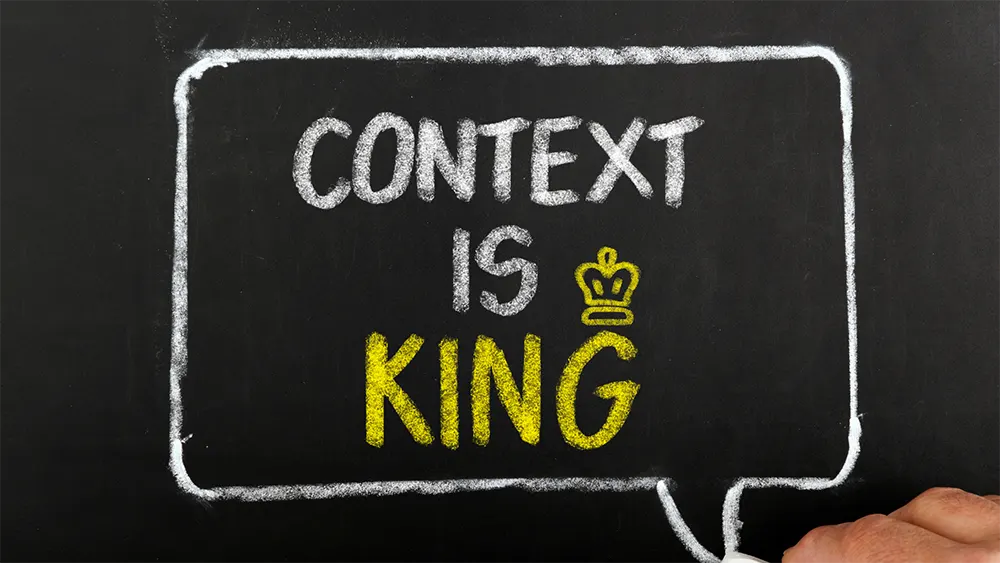The Three Pillars of CRM Success: Contextualisation and How to Make it Easy
By Bruce Klaic (MBA) - Head of Marketing Monday, December 12, 2022

As a small business owner, you know that in order to make better ROI on your marketing efforts, contextualisation is one of the key pillars for CRM success.
What you may not know, however, is how to go about contextualising your customer data in order to make the most of it. In this blog post, we’ll explore contextualisation and why it’s so important for effective CRM strategy. We’ll also look at some tips for putting context into action so that you can see actual results from your marketing campaigns.
Contextualisation and the Buyers Journey
Business owners often aim to reach as many potential customers as possible. However, it is not enough to simply put your product or service out there and hope for the best. Instead, you need to understand the buyer's journey and how contextualisation can help you reach more customers in the most effective way possible.
The buyer's journey begins with awareness - the stage at which a consumer first becomes aware that there is an issue or gap in their product/service offering that could be filled by your offering. Whether this is caused by poor planning tools, outdated hardware, or any number of potential issues, businesses need to understand how consumers reach this point and provide relevant content to help them get there.
As the buyer moves from awareness to consideration, you need to be offering content that helps them understand how your product or service can solve their problem. This could include case studies, testimonials, white papers or ebooks that provide specific information about how your solution fits into their journey. If you are able to show people how your product has solved a similar problem for someone in their industry, you are more likely to be seen as the best solution for their needs.
Finally, at the decision stage of the buyer's journey, it is important to have content that specifically addresses how your offering will help them achieve their goals. This could include free trials, live demos, or other materials that allow them to explore your product and how it works before making a purchase. By providing the right content in each phase of the buyer's journey, you give customers the push they need to reach their decision.
So, when thinking about reaching potential customers, remember that everyone must pass through the same key buying stages - but the content that you provide to those consumers needs to be tailored for the specific stage of their journey. With the right contextualisation, you can reach more potential customers and help them make an informed buying decision.
Build Campaign triggers that are linked to the Buyer's Journey using HubSpot
When thinking about content creation, always consider what the buyer needs at each stage of their journey. By doing this, you can create email triggers and messages that are relevant to where they find themselves in the process. This will not only ensure that your content is useful to them but also keep them interested in purchasing from you.
Awareness:
Blog: How email campaigns should fit into your wider marketing strategy.
Consideration:
Guide: 10 ways to improve email conversion rates.
Decision:
Case study - why company X chose HubSpot to automate their email marketing.
When you segment your CRM by customer journey and only send prospects information that is suitable for their stage in the buyer's journey, you will be able to deliver the right message at the right time, instead of bombarding them with too much or too little information. Send well-timed messages that are full of useful information like breadcrumbs leading them to your product rather than pushing it on them before they're ready.
Use HubSpot Smart Content to Contextualise your messaging at scale
HubSpot Smart content allows you to create unique emails, landing pages and CTAs for each of your prospects or contacts by Displaying different content depending on what is known about them. Instead of wasting time sending context-dependent content to prospects one at a time, you can use HubSpot pages that change according to their needs. Use the data in your CRM system to show Awareness, Consideration or Decision-related content depending on where they are in the buyers’ journey. This way, you match your content perfectly to their stage in the process.
If you take the time to understand which potential customers need to see your messaging, you will reduce wasted effort, increase conversion rates, and make more sales with less work.
As HubSpot Gold Sloutinos Partners, HubSpot is the go-to platform we recommend to our clients as it offers many features and tools that make contextualisation simple!
Stay tuned for our next blog on the third Pillar of CRM Marketing, Personalisation!
